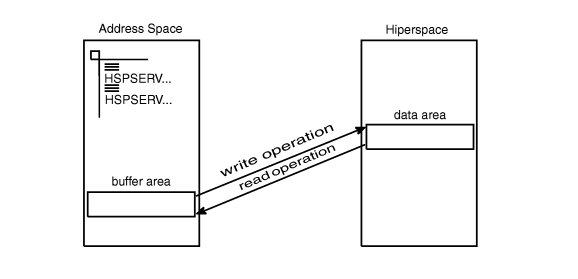A hiperspace is a range of up to two gigabytes of contiguous virtual storage addresses that a program can use as a buffer. Like a data space, a hiperspace holds only data, not common areas or system data; code does not execute in a hiperspace. Unlike data in a data space, data in a hiperspace is not directly addressable.
- Create a hiperspace
- Release an area in a hiperspace
- Delete a hiperspace
- Expand the amount of storage in a hiperspace currently available to a program.

The data in the hiperspace and the buffer area in the address space must both start on a 4K byte boundary.
This information helps you create, use, and delete hiperspaces. It describes some of the characteristics of hiperspaces, how to move data in and out of a hiperspace; and how data-in-virtual can help you control data in hiperspaces. In addition, z/OS MVS Programming: Assembler Services Reference ABE-HSP contains the syntax and parameter descriptions for the macros that are mentioned in this information.